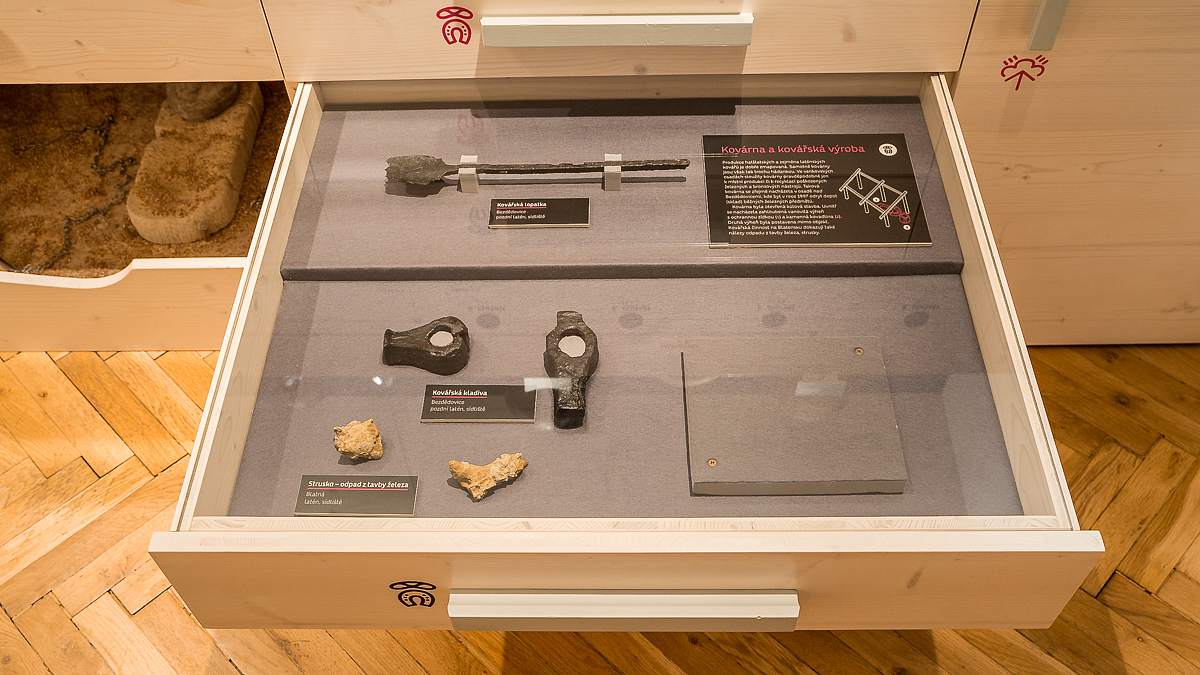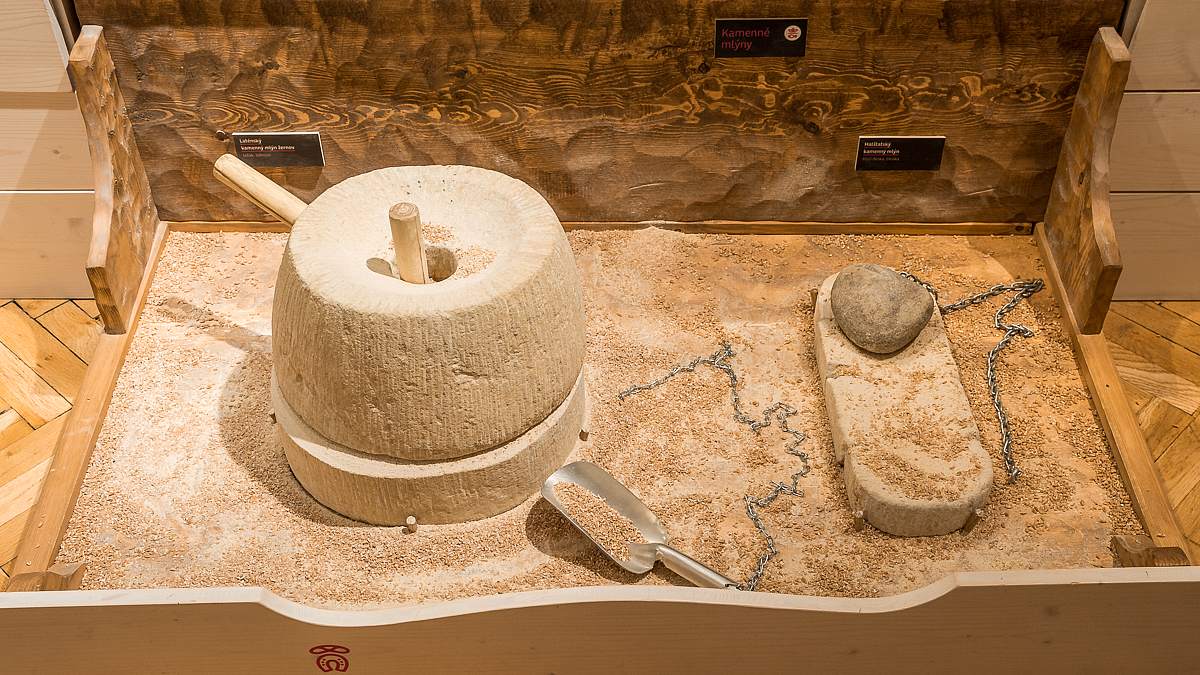MAKING A LIVING AND CRAFTS IN PREHISTORIC TIMES
During the Iron Age, the Blatná region was inhabited by people who lived in solid surface wooden houses and who made their living mostly by cattle breeding and crop growing. At the beginning of the Hallstatt period in the 8th century BC, they still used a wooden scratch plough to cultivate the land. However, this plough did not reach deep enough and so it would not loosen the soil sufficiently. At the end of the Hallstatt period in the 5th century BC, a narrow iron ploughshare with a cone began to emerge and subsequently expanded in the La Tène period. To make the process more efficient, the ploughing was carried out crosswise so that a square grid was created.
The crops were harvested with the aid of sickles and the grain was then ground in stone mills. Since the 8th century BC, these tools had also undergone a significant change, when a simple mill consisting of a stone plate and a friction stone was replaced with a rotary stone mill made of two adjacent stones (bed stone, runner stone).
The most sough-after craftsmen during the Iron Age were blacksmiths. Their production is well mapped, e.g., near Bezdědovice, the site of the so-called ‘Bezdědovice Treasure’ consisting of forging products from the 2nd century BC. However, the actual blacksmith’s workshops are a bit of a puzzle. In rural settlements, blacksmith’s workshops were probably used only for the local production of items of daily use or for recycling damaged iron and bronze tools. Such a blacksmith’s shop was probably also situated in the settlement above Bezdědovice, where a storage area for common iron items was uncovered in 1997. It also contained blacksmith hammers and a trowel.


